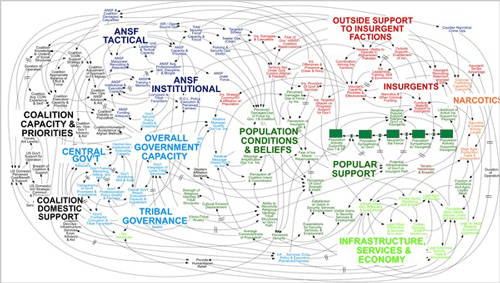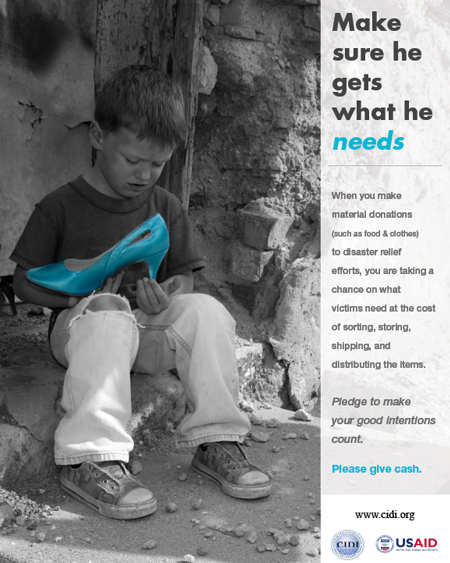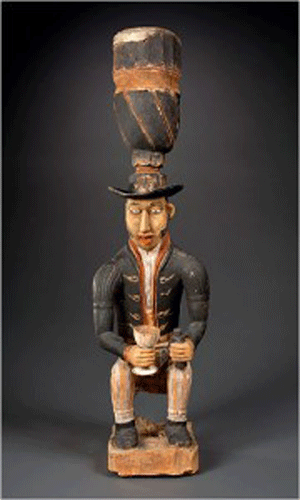Deborah Brautigam, Associate Professor in American University’s International Development Program, is author of the book The Dragon’s Gift: The Real Story of China in Africa (see our review here), and a new blog which digs into current China in Africa issues reported in the press. She recently spoke at NYU and answered a few of our questions.
Q: It’s my reading of your book that you think Western donors could learn something from the way China behaves in Africa. What are the strengths of the Chinese way? Are there specific strategies or programs that the West should pay attention to?
A: As a donor, China's way has several advantages. Take the way they operate. They rarely "poach" skilled staff from African ministries to work in their own offices. The focus on turnkey infrastructure projects is far simpler and doesn't overstretch the weak capacity of many African governments faced with multiple meetings, quarterly reports, workshops, and so on. Their experts don't cost much. In addition, their emphasis on local ownership is genuine, even if it leads to projects like a new government office building, a sports stadium, or a conference center. They understand something very fundamental about state-building -- something that Pierre L'Enfant understood in 1791 when he teamed up with George Washington in newly independent America: new states need to build buildings and dignity, not simply strive to end poverty.
But the Chinese also funded university scholarships, roads, bridges, mini-hydropower, and irrigation, for decades -- when other donors had moved away from most of these sectors. And like Japan, they see nothing wrong with using subsidies to help foster investment by their own companies; this is seen as beneficial to both sides. From the 1970s to the early 1990s, Southeast Asia's "miracle" was underwritten not only by good policies, but by Japanese investment, and Japanese aid was a partner in this. These investments boosted manufacturing prowess, attracting Japanese firms to go offshore. China's engagement in Africa could have similar results in at least a handful of countries with receptive leadership. The Chinese avoid local embezzlement and corruption by very rarely transferring any cash to African governments. There is almost no budget support, no adjustment or policy loans. Aid is disbursed directly to Chinese companies who do the projects. The resource-backed infrastructure loans work the same way. Of course those companies themselves might give kickbacks, as we've seen in Namibia.
Q: How about vice versa? Does China need to learn from the West?
A: Beijing's stubborn refusal to be transparent about official aid and other flows of development finance has created headaches for the Chinese that could have been avoided, in some cases simply by publishing information already being collected in China. The OECD members could teach China something here. The West and Japan are also far more sensitive to social and cultural differences and power relations -- resettlement issues, land tenure rights, women's role in production. In general, the Chinese -- like the World Bank decades ago -- simply depend on local governments to sort these things out. That's one of the downsides of genuine local ownership. China also needs a Foreign Corrupt Practices Act to provide a framework for moving against corruption and kickbacks overseas.
Q: Is Chinese aid more effective than Western aid? Do we have enough information to answer this question?
A: More effective at what? To answer this question we really have to know: what is the real purpose of aid? If we simply "follow the money" from the US, for example, we can see that national security (including resource security) and diplomacy appear to be far more important than reducing poverty or fostering growth. That said, our understanding of the impact of Chinese aid on development is very, very weak and highly anecdotal. There simply is no data. Until recently, Chinese aid was quite modest and had only local impact. It's still not very extensive. I suspect, as with Western aid, that it will be more effective in conditions/countries with more developmental elites: Mauritius as opposed to Mauritania, for example. On the other hand, Chinese business engagement is already having a tremendous impact. Huawei and ZTE are transforming the cellular telephone landscape across Africa, for example. But this is not aid.
Q: China has been heavily criticized for its close relationship to the government in Sudan. Do you think the Western perception of Chinese motives in Sudan is accurate? What kind of role do you see China playing in Sudan?
A: Al-Bashir is widely (and correctly) reviled for his role in trying to crush a rebellion in Darfur using extremely brutal force. Chinese aid to Sudan is relatively small, but their engagement (in a joint venture with Sudan) in oil provides the bulk of the revenues that allow al-Bashir to finance the war, and they have plenty of business. As the New York Times recently reported, in the north, Sudan's economy is booming. The Chinese have also blocked and/or watered down Security Council resolutions on Darfur, allowing their focus on sovereignty (and their concern about oil supplies) to trump the newer norm of the "responsibility to protect". Chinese arms continue to flow into the country (probably legally: Sudan is under a UN arms embargo, but it is a limited one). Sudan also has its own arms factories (built by the Chinese) which makes it hard to tell where arms actually originate. All of these provide ample fodder for the critique of China's role.
But several things are not widely reported.
- First, China's role in Sudan has changed over the past several years. They were crucial in getting Khartoum to accept a joint UN/African Union peacekeeping force (one, by the way, authorized by the UN, but not funded as generously as originally pledged). They allowed al-Bashir's case to be sent to the International Criminal Court for prosecution for war crimes (as Security Council members, they could have vetoed this). And as noted both by President Bush's special envoy, Andrew Natsios, and President Obama's special envoy, Scott Gration, Beijing is now working together with the US government and other major powers in developing joint strategies to bring the Sudanese government and the rebels to the negotiating table. As China-watcher Erica Downs put it, the West and China are now coordinating their "good cop" and "bad cop" roles in trying to end the crisis.
- Second, there is no doubt that Beijing could have moved much sooner, and much more effectively, to become part of the solution. But they never held all the keys to solving the Darfur tragedy. In making a tactical decision to focus on China as the lynch pin to solving Darfur's crisis, and using the 2008 Olympics as the pressure point, activists let the other major powers off the hook. To end the violence, Darfur needs a peace agreement, and that requires all the parties to participate in negotiations. The West has not yet been able to get all the major rebel groups to show up to start talking.
 From Aid to Equality
From Aid to Equality

















